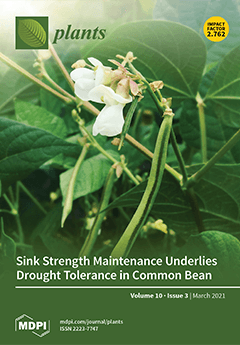The growing demand for high value aromatic herb
Polygonum minus-based products have increased in recent years, for its antioxidant, anticancer, antimicrobial, and anti-inflammatory potentials. Although few reports have indicated the chemical profiles and antioxidative effects of
Polygonum minus, no study has
[...] Read more.
The growing demand for high value aromatic herb
Polygonum minus-based products have increased in recent years, for its antioxidant, anticancer, antimicrobial, and anti-inflammatory potentials. Although few reports have indicated the chemical profiles and antioxidative effects of
Polygonum minus, no study has been conducted to assess the benefits of micro-environmental manipulation (different shading levels) on the growth, leaf gas exchange and secondary metabolites in
Polygonum minus. Therefore, two shading levels (50%:T2 and 70%:T3) and one absolute control (0%:T1) were studied under eight weeks and 16 weeks of exposures on
Polygonum minus after two weeks. It was found that
P. minus under T2 obtained the highest photosynthesis rate (14.892 µmol CO
2 m
−2 s
−1), followed by T3 = T1. The increase in photosynthesis rate was contributed by the enhancement of the leaf pigments content (chlorophyll a and chlorophyll b). This was shown by the positive significant correlations observed between photosynthesis rate with chlorophyll a (r
2 = 0.536;
p ≤ 0.05) and chlorophyll b (r
2 = 0.540;
p ≤ 0.05). As the shading levels and time interval increased, the production of total anthocyanin content (TAC) and antioxidant properties of Ferric Reducing Antioxidant Power (FRAP) and 2,2-Diphenyl-1-picrylhydrazyl (DPPH) also increased. The total phenolic content (TPC) and total flavonoid content (TFC) were also significantly enhanced under T2 and T3. The current study suggested that
P.minus induce the production of more leaf pigments and secondary metabolites as their special adaptation mechanism under low light condition. Although the biomass was affected under low light, the purpose of conducting the study to boost the bioactive properties in
Polygonum minus has been fulfilled by 50% shading under 16 weeks’ exposure.
Full article






